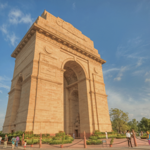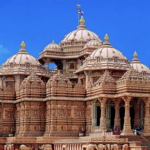Things To Do
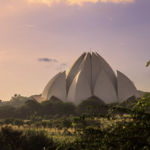
Lotus Temple
The Lotus Temple, located in New Delhi, India, is a Baháʼí House of Worship. It is one of only seven still remaining (thirteen were built in total). This one is known for its notable lotus-like shape, but we recommend visiting to learn more about the Bahai faith which teaches the essential worth of all religions and the unity of all people. Fun fact: the oldest Baháʼí temple is just north of Chicago!
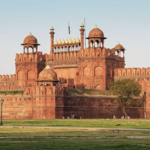
Red Fort
The Red Fort or Lal Qila is a historic fort in the Old Delhi neighborhood. It historically served as the main residence of the Mughal emperors. Its design is credited to architect Ustad Ahmad Lahori, who also constructed the Taj Mahal. The fort represents the peak in Mughal architecture and combines Persianate palace architecture with Indian traditions.
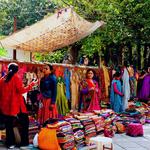
Janpath Urban Market
Janpath is an incredibly eclectic market where you’re bound to find something interesting (even if you’re barely even looking). From the Tibetan Market and the Gujarati Market to the fancy stores and the flea market, you'll find everything in this large urban market. Afterwards, you can walk over to Connaught Place for a more relaxed and showroom-type market.
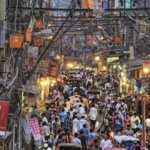
Chandni Chowk Market
The Chandni Chowk market is more than thee centuries old and is one of the busiest markets in Old Delhi, India. It may be overwhelming for some, but it is a huge part of Delhi culture and we highly recommend a visit. You can explore the everyday life of the locals as you walk into the spice, jewelry, dry fruits, and wedding markets and build up an appetite for all the delicious Indian street food.
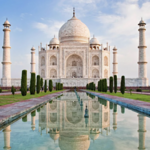
Taj Mahal
The Taj Mahal is widely considered one of the most beautiful buildings ever created. It is considered one of the seven wonders of the world after all! The exquisite marble structure is a mausoleum, an enduring monument to the love of a husband for his favorite wife. It's also an eternal testament to the artistic and scientific accomplishments of a wealthy empire. This one is quite a drive, but we promise it's worth it! You can make it a day trip and book a rental car, hire a driver, or go thru an agency.
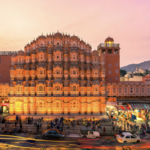
Jaipur
Jaipur is quite a drive, but we recommend visiting if you want to make it an overnight trip. Jaipur became known as “The Pink City” when, in 1876, Maharaja Ram Singh had most of the buildings painted pink—the color of hospitality—in preparation for a visit by Britain's Queen Victoria. Today, the city is known for its bazaars, forts, temples, palaces, and wildlife sanctuaries.
